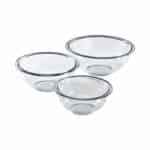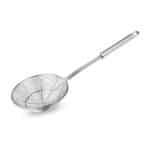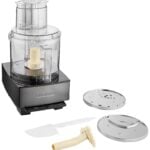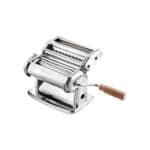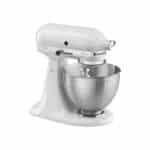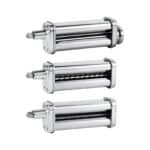There’s nothing quite like the vibrant green color of fresh spinach pasta. This is the pasta that makes traditional Lasagne alla Bolognese signature look and it’s a tender, silky pasta that works well with a variety of lighter pasta sauces from vodka sauce to pesto. This recipe is a bit more advanced than our basic homemade pasta dough recipe but so worth the effort.
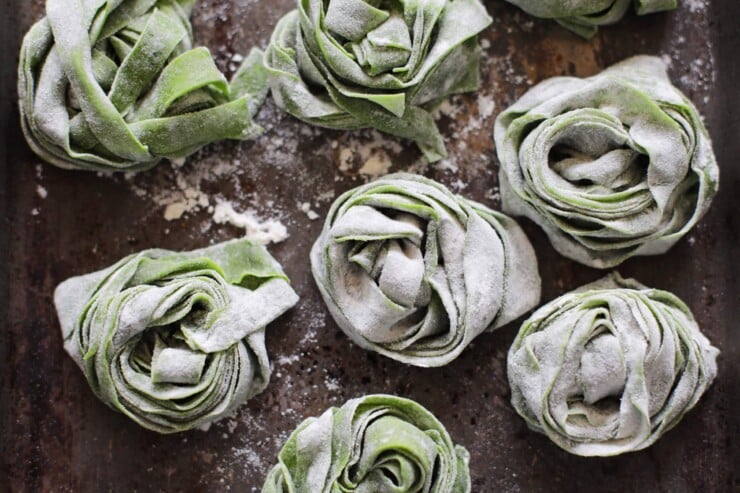
Four Key Tips For Making Homemade Spinach Pasta
Start With Our Basic Egg Pasta Recipe
If you’ve never made fresh homemade Italian pasta this one might be a bit of a challenge because it’s a wetter and more delicate dough. Instead, we’d recommend you make the Salt & Wind Travel Basic Italian Egg Pasta Recipe (or even buy fresh lasagna sheets from your grocery store). The reason? The addition of pureed spinach means this is a wetter and slightly harder-to-work-with dough.
Follow Our Homemade Pasta Tips
If you have made pasta before, we encourage you to try this out because the result is sublimely delicate pasta! You’ll just want to heed all of our homemade pasta-making tips and keep in mind that you may need more flour than you’ve used in other pasta recipes because this dough can be rather wet.
Squeeze Out Excess Water
Speaking of, the wetness of the dough is determined not only by the climate of where you live but also by the spinach puree. You’ll want to squeeze out as much of the excess water from blanching the spinach as you can to keep it from being too wet.
Food Processor vs Blender
Also, it depends on how you puree the spinach. If you puree it in a food processor or standard blender it will likely have some green flecks that don’t totally break down but it will result in a less wet dough. If, however, you want the dough a vibrant green, you’ll want to puree it in a high-performance blender like a Vitamix but this will break the spinach dough further and the dough will be wetter.
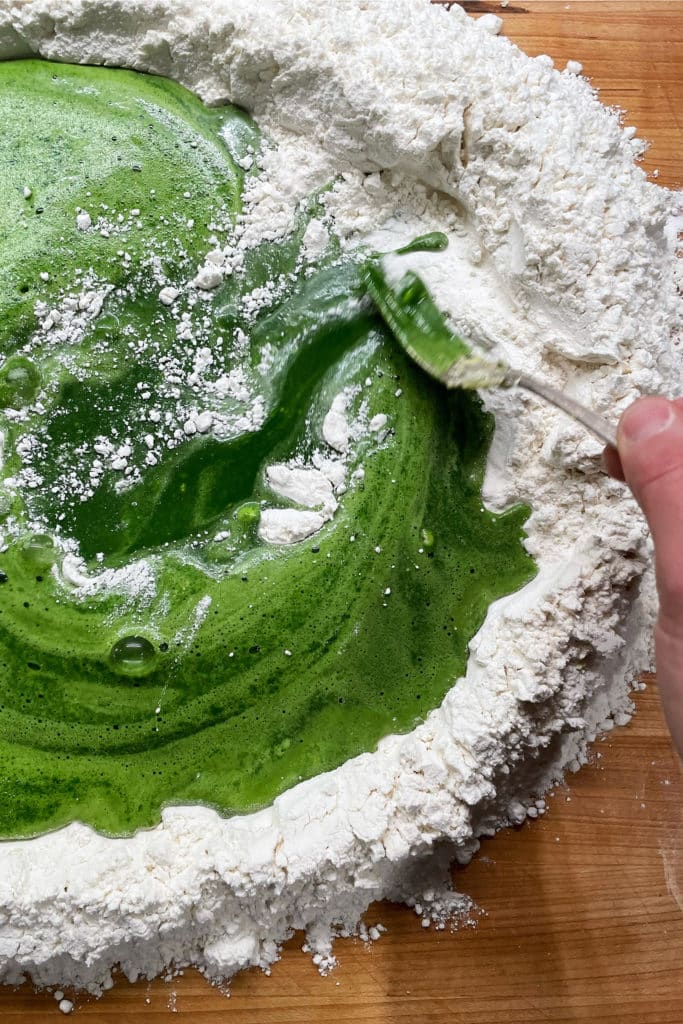
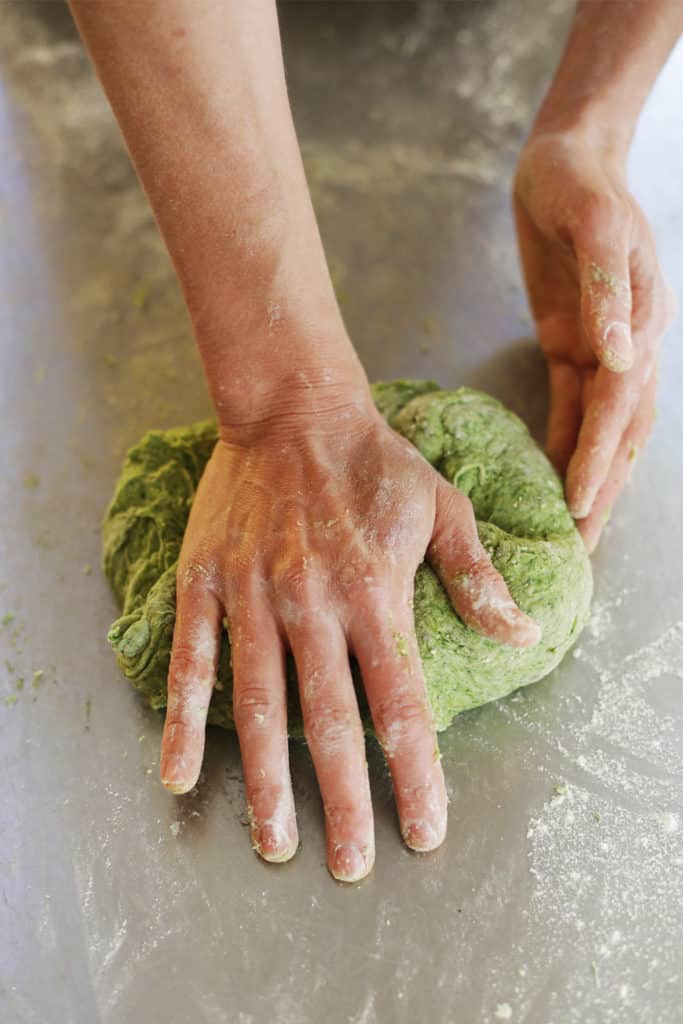
PIN IT FOR LATER!
Want to cook this recipe at a later date? Pin it to your Pinterest account so you can access it when you need some cooking inspiration!
Go stock up on all your cooking essentials, then head into the kitchen, make this, and share it with us by tagging @saltandwind and #swsociety on social!
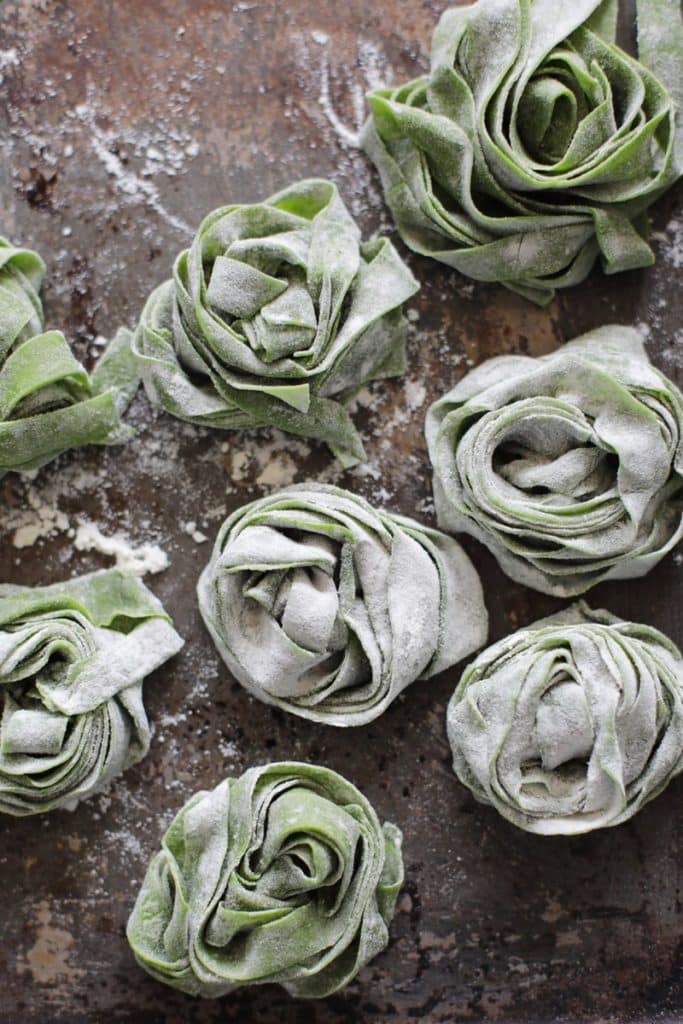
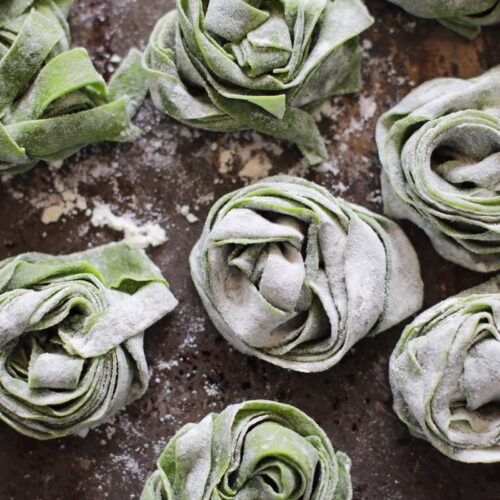
Homemade Fresh Spinach Pasta Recipe
Equipment
Ingredients
- 5 ounces baby spinach or defrosted frozen spinach
- 4 large eggs
- 1 pound all-purpose flour or "00" flour
Instructions
- Blanch The Spinach: Bring a medium pot of water to a boil over high heat and prepare an ice bath by filling a bowl halfway with ice water. Drop the spinach into the boiling water and let cook until it’s just wilted for 20 to 30 seconds. Immediately drain the spinach and plunge it into the ice water bath. After a few minutes, when the spinach is cold, drain it from the ice bath, place it in a fine-mesh sieve and push on it to get out the majority of the water.
- Make The Spinach Puree: Combine the blanched spinach and the eggs in the bowl of a food processor fitted with an “S” blade. Puree the mixture until it’s evenly combined, and all the spinach is broken up. If the mixture separates before you get around to using it, give it a few more pulses to recombine it.
- Stir Together The Pasta Dough Ingredients: Sift the flour into a 9 or 10-inch circle onto a clean, dry work surface. Make a well in the center of the flour (you want a border of at least 1 ½-inch height, then pour in the spinach and egg mixture.Use a fork to add a little flour (about 1 to 2 tablespoons) to the liquid until most of the flour is in the egg mixture, and it’s like a really thick pancake dough.
- Knead The Pasta Dough: Using your clean hands, mix the remaining flour into the liquid mixture and begin to form it into a ball. Start to knead and turn the dough until it is a ball, about 3 minutes.Wash your hands, don’t dry them, and then knead the dough until the surface is slightly dimpled. The dough should be thoroughly moist and evenly hydrated but not sticky or overly damp.Wrap in plastic wrap or cover with a dry, clean kitchen towel and set aside to rest for at least 15 minutes before using.
- Roll The Pasta Dough Out: When it comes to the pasta, you have two options for how to roll it out -- by machine or by hand. If you're going to make pasta often, consider investing in a classic Imperia Pasta Machine (or even get the KitchenAid Pasta Attachment for your stand mixer) and then follow the instructions here.However, you can also roll it out by hand with the help of a rolling pin or even a wine bottle. For tips on that, watch this video.
- To Roll The Pasta With A Machine: Secure a tabletop pasta machine to a counter or fit the Pasta Roller attachment onto the KitchenAid Stand Mixer. Cut dough into six pieces (they need to fit in the Pasta Roller easily).Press each piece into a flat rectangle shape. (Cover the pieces you aren't using with a kitchen towel, so they don't dry out.) This dough is rather wet, so you will need to coat it and the pasta machine rollers in flour, so it doesn’t stick.Pull the roller adjustment knob straight out and turn to the widest setting (number 1 on the KitchenAid). Release the knob, making certain the pin on the roller housing engages the opening on the back of the adjustment knob, allowing the knob to fit flush against the roller housing.Turn Stand Mixer to speed 2. Feed flattened lightly floured dough into rollers to knead. Fold dough in thirds like an envelope, flatten, lightly flour, and roll again. Repeat until the dough is smooth and pliable and covers the width of the roller. Lightly dust pasta with flour while rolling and cutting to aid in drying and separation.Feed dough through rollers to further flatten the sheet of dough. Change the roller to setting 3, and repeat the rolling process. Do not fold the dough from this step on. Continue to increase roller setting until you reach setting 6 to 8 (thicker for making lasagna and thinner for fresh noodles.Trim the dough as needed to make it wieldy. Once the dough is rolled to setting 8, dust it lightly with flour, then you can use it as desired to make lasagna.Otherwise, form the pasta into the desired shape. This pasta is traditionally cut into tagliatelle, which is about 1/4 inch thick noodles and tossed with Ragù alla Bolognese. Once formed, spread the pasta on a floured baking sheet, cover it with a kitchen towel, and set it aside. At this point, you can boil it or freeze it for future use. Yields about 1 pound pasta.
